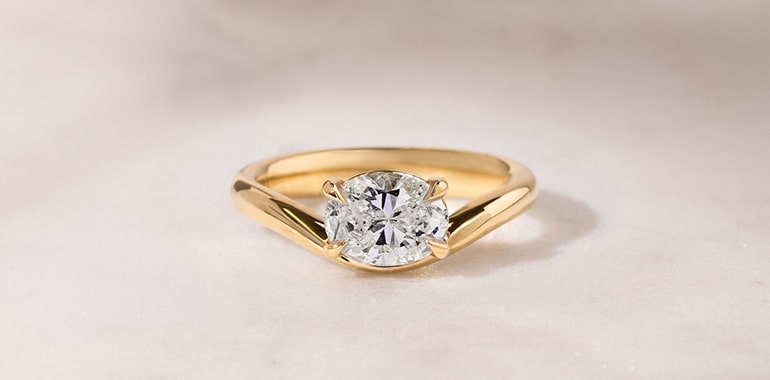Diamond Buying Guide
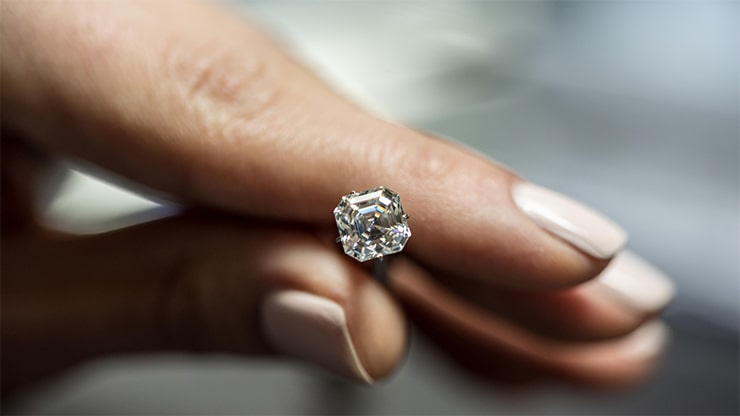
An engagement ring may be one of the most meaningful gifts anyone can receive. A gesture that promises love, commitment and dedication to your partner. The process of finding the perfect diamond for that ring is an exciting, symbolic experience, but one that can sometimes leave buyers confused about where to start.
This easy to read guide will give you an overview of some of the factors to consider when you’re looking to purchase a diamond.
What Are Diamonds?
Diamonds are naturally-formed crystals of pure carbon, created at least 120 kilometres beneath the Earth’s surface where heat and pressure cause it to crystalise and rise to the surface over millions of years.
Diamond is the hardest natural substance known to man, so it cannot be scratched by anything except another diamond. This superior hardness and durability is one of many reasons it is universally chosen as the perfect gemstone for engagement rings.
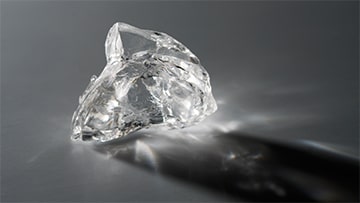
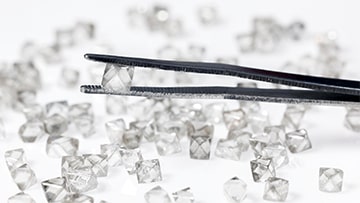
Diamond Shapes
The first consideration when choosing a diamond is usually the shape.
The most popular shape has always been round diamonds. Round diamonds, referred to as “round brilliant cut”, have the highest amount of diamond sparkle compared to other shapes, and make up approximately 75% of diamond sales.
Diamonds that are cut in a shape other than round are referred to as “fancy cut” diamonds. Some fancy cut shapes of diamonds which are cut to enhance diamond sparkle are: princess (square), pear, oval, cushion, heart, radiant, and marquise.
Other shapes are cut to emphasise the diamond’s clarity such as emerald and asscher shapes. These are cut with straight, parallel lines with minimal facets to create a window-like diamond. Rather than sparkle, the focus on these diamonds is their exceptional cleanness.
Long shapes are very flattering for long fingers. Some examples of long shapes are: oval, pear, rectangular cushion, emerald and marquise. Long diamonds also visually appear bigger than a round diamond of equal weight.
The princess cut diamond is the closest to a perfect square, and the cushion cut has softly rounded corners and is popular in vintage and halo designs.
Round, princess, square cushion, and asscher shapes possess the same length and width and suit most finger types.
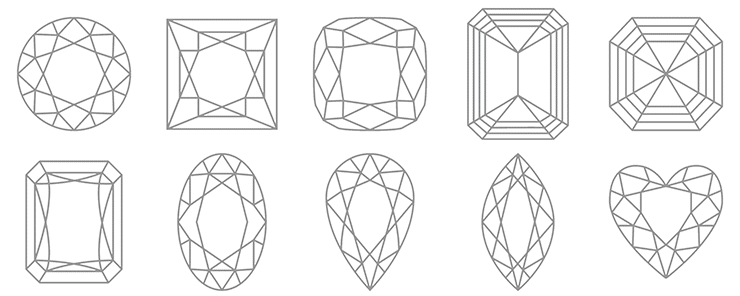
Introduction to the 4 Cs
You should familiarise yourself with the 4 Cs of diamonds – the 4 Cs are the most important fundamental characteristics that influence the price and quality of a diamond.
The 4 Cs are explained in more detail here but below is a brief overview.
Cut
The cut of a diamond refers not to the shape (see above) but the quality of the proportions to allow for the best possible visual outcome.
The cut of the diamond is what gives the diamond its diamond-like appearance and has the greatest influence on its sparkle. It is therefore the most important of the 4 Cs. It’s also the easiest part of the diamond to appraise to the untrained eye – if you compare a poorly-cut diamond with a well-cut diamond, you can see the difference in the “life” of the diamond quite easily.
At Larsen Jewellery, we only select diamonds with a high-quality cut, so you can be assured that any diamond offered to you will look stunning.
Colour
The diamond’s colour can also be phrased as how colourless the diamond is. The “whitest” diamond is completely absent of any underlying tint, and as you go further down the colour scale the diamond tint will slowly become more apparent.
Diamond colour uses a scale of D-Z with D being the whitest diamond with no colour tint, down to Z with a significant tint.
Although you can’t visually assess the colour grade of a diamond without the right laboratory lighting and experience, you can certainly discern a white diamond from a tinted diamond in most cases.
To ensure your diamond is lovely and white, we recommend choosing a colour no lower than G. Diamonds in the H-J colour range are a warmer white with a soft tinted undertone.

Clarity
Diamonds are natural minerals and form deep under the Earth’s surface, where there’s a lot of other geological processes that happen. This natural process can form birthmarks, called inclusions, within a diamond. Some diamond inclusions can be quite large, but ideally when you select a diamond you should pick one where the inclusions cannot be seen without magnifying the diamond.
Diamonds are graded from Flawless to Included. A heavily-included diamond (I1-I3 clarity range) will have inclusions that are visible to the naked eye, so you want to avoid those.
Flawless and nearly-flawless diamonds (IF-VVS2 clarity range) are rare in nature and accordingly fetch quite a price premium.
Slightly Included diamonds (SI1-SI2 clarity range) are considered the best value for money by having inclusions that are visible under 10x magnification but not visible to the naked eye. The Very Slight range (VS1-VS2 clarity) is the next highest grade to the SI range and is a good range to consider if you want to make sure your diamond is exceptionally clean.
The clarity grade influences the price of a diamond more than the colour does, so it is important to determine how important this factor is to you.
At Larsen Jewellery, we select diamonds that are free of visible inclusions, typically in the VS-SI clarity range.

Carat
The carat (ct) is the unit of weight used to express how heavy diamonds are. All else being equal, the carat weight makes the biggest impact on a diamond’s price, with the price of the diamond exponentially increasing when it surpasses certain weight markers. For this reason, the carat of the diamond is usually the first part of the diamond to be described.
The metric carat, which is used to describe the weight of diamonds, should not be confused with gold carat, which relates to the purity of gold.
When under 1ct, a diamond’s weight is referred to in points of a carat: fifty points is half a carat, twenty-five points is one quarter of a carat, and so on. This is a centesimal system just like cents and dollars, so if you think of a carat as a dollar and a point as a cent, the carat weight system can make more sense.
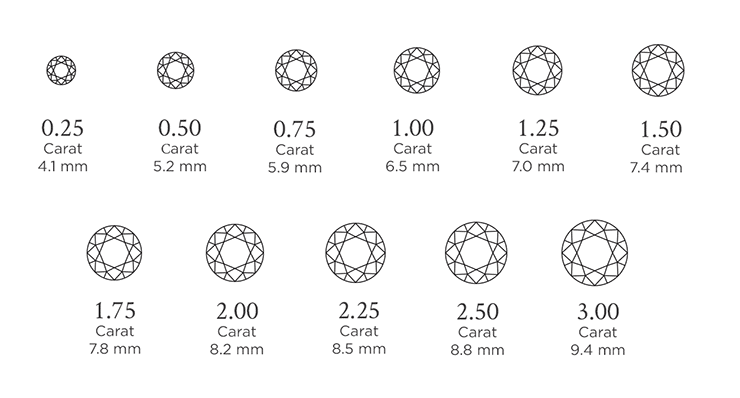
Other Price and Quality Factors
Fluorescence
Not included in the 4 Cs, but worth mentioning, is the level of fluorescence present in a diamond. Approximately one third of diamonds have some level of fluorescence which can be observed under ultraviolet light. Diamonds with particularly strong fluorescence may even display fluorescence under strong daylight.
Strong fluorescence can have a negative impact on the appearance of a diamond. Although this is not a common occurrence, we would still prefer not to encounter this effect and therefore recommend diamonds in the “none” or “faint” range.
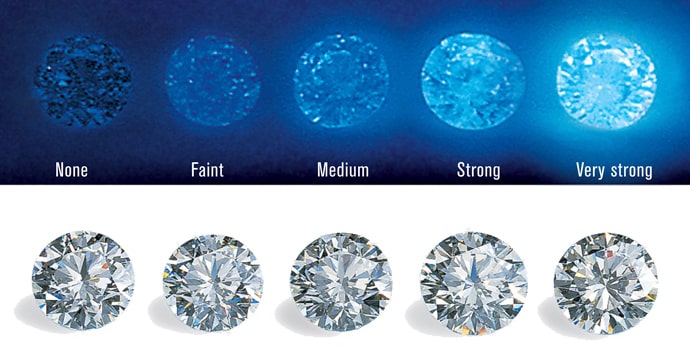
Certificates
A diamond certificate is a document completed in a specialised diamond grading environment and undertaken by an independent laboratory.
A certified diamond comes with a hardcopy document listing the diamond’s 4 Cs, measurements, and fluorescence grading. The diamond itself is also laser inscribed with the certificate’s report number which allows you to confirm the diamond is matched with the correct report and vice versa.
A diamond certificate has a lot of useful applications; when you are in the process of selecting a diamond, the certificate gives you a non-biased overview of the quality of the diamond – the diamond is as described by a third party with no vested interest in the diamond. The certificate is also useful for insurance, identification and replacement purposes.
At Larsen Jewellery, we recommend GIA certified diamonds due to their globally renowned status of having the highest standards for grading, although there are other reputable diamond grading certificates on the market as well.

Bringing It All Together
The information above gives you an overview of what diamond information is used to describe the quality of a diamond, but now you need to use this information to decide what diamond is right for you.
A high-quality cut grade should be recognised as the first priority, because this is directly related to all the impressive visual features we recognise with diamonds – fire, brilliance, and scintillation. We only offer diamonds with high-quality cut grades for the best diamond options with no compromise on quality.
The colour is also of high importance because the colourlessness of a diamond can be easily noticed.
The clarity of a diamond should only be noticeable through 10x magnification as long as its eye clean, and therefore is not as crucial visually as the colour.
The carat weight can be determined either by assessing the size that best suits the hand of the wearer, or can also be led by budget as different carat weights meet different budgets.
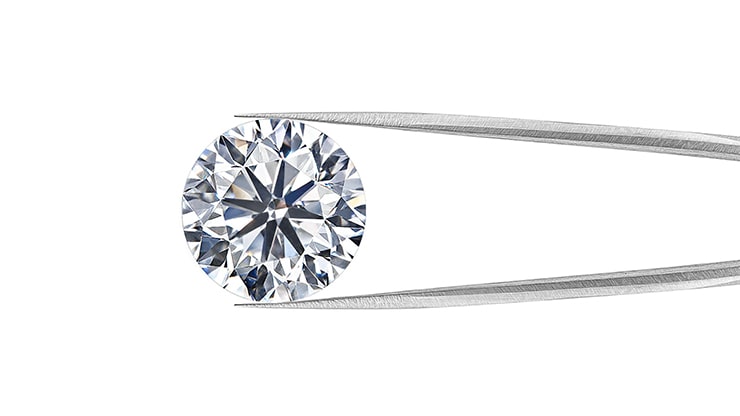
Selecting Diamonds
Part of putting together your ideal diamond specs will come down to your own personal preference: would you prefer a larger diamond or a whiter diamond? Do you want a diamond of a particular clarity range or is eye-clean the perfect scenario?
Ultimately, the key is to select a diamond that looks most visually impressive to you. Can you tell the difference between a D colour and a G colour? Can you see the difference between a 0.75ct and a 0.80ct diamond, or a 0.95ct and a 1.01ct?
There isn’t a right or wrong answer to the above questions, but being honest with yourself and what you can and can’t see is very important to narrowing your diamond selection. At the end of the day, the paperwork for the diamond isn’t being set into an engagement ring; it’s the diamond itself.
There are a few methods that you can use to find your perfect diamond.
Some people prefer to do plenty of research before approaching us so they know exactly what kind of diamond they would like and what they can expect to pay for their ideal diamond. This requires an understanding of which diamond characteristics you prefer.
Alternatively, some people also start with a budget and then approach us to discuss what diamond selection is most suitable for their price range. With this approach, our experienced jewellers at Larsen Jewellery can do all the heavy lifting for you and provide you with your very best options, and explain each option to you so you know exactly why each diamond has been hand-selected for you.
You are welcome to take any approach you feel most comfortable with and we will take your lead.

Setting a Budget
By the time you get to the stage of seriously considering an engagement ring purchase, you’ve probably heard endless suggestions for how much to spend on an engagement ring. There are almost as many “rule of thumb” guidelines for budget as there are diamonds available for purchase.
At the end of the day, engagement rings can be made for a wide range of budgets and your budget should be what you’re comfortable spending.
The total engagement ring price is the price of the ring and the price of the centre diamond combined. You may consider your total budget and deduct the ring price from that to decide on your diamond budget, or you may decide to come up with a separate diamond budget.
Our most popular engagement ring designs can be seen here with pricing for the ring, excluding centre diamond. This can be useful in understanding the costs expected for the ring.

Viewing Diamonds
The most exciting part of putting together your engagement ring is picking your diamond. Nothing beats the thrill of knowing that you selected your diamond from a beautiful collection, curated specially for you.
Viewing Diamonds in the Larsen Jewellery Studio
Our studios hold a selection of diamonds that can be viewed by appointment. All these diamonds have been selected to represent our values for quality and brilliance. If you have preferred specifications, we can also arrange to bring diamonds into our studio that fit your criteria. This is an obligation-free consultation with one of our jewellers, who will discuss the different qualities of each diamond you are shown and guide you through the selection process.
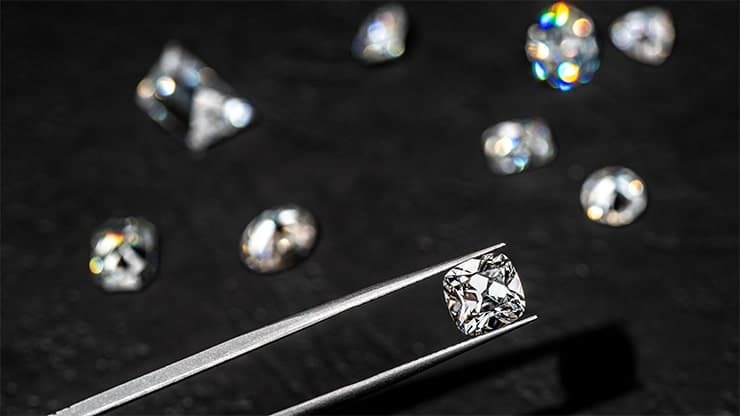
Viewing Diamonds on the Larsen Jewellery Website
The Larsen Jewellery online shop was created to enable broader access to our collection of custom-made engagement rings. As well as our popular designs, our website has a dedicated range of diamonds which have been selected to represent our dedication to sourcing beautiful, high-quality diamonds at competitive prices.
Through our online shop, you can access high-resolution images of each diamond as well as a copy of the certificate for additional assurance and information.
Not all of the diamonds on our website are available to in the studios. For any specific requests, please contact our studio directly and we will gladly follow up with specialised diamond options for you.
You can view the Larsen Jewellery engagement ring collection and our expertly curated diamond selection here.
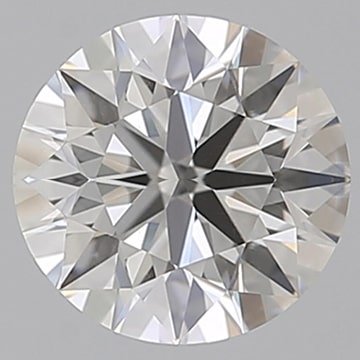
Not sure where to start?
Get in touch and one of our jewellers will be happy to answer your questions, or browse our engagement ring galleries to get inspired.
